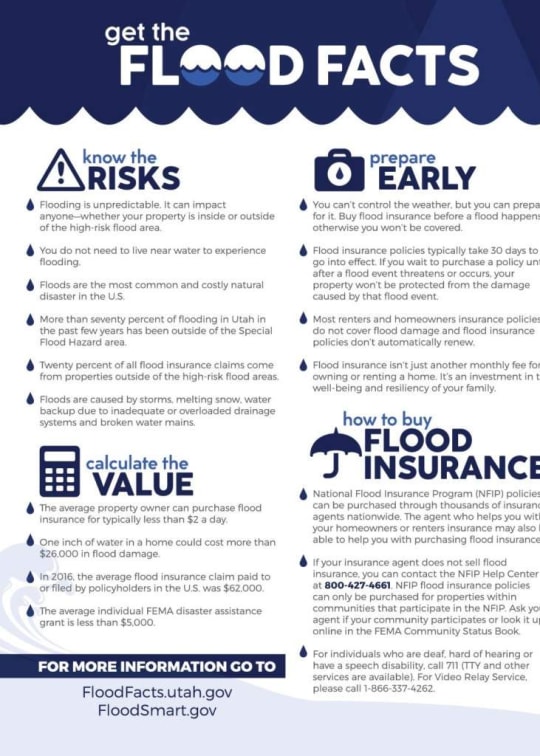Fact Sheet - Flood
At a glance..
investing in mitigation steps now such as constructing barriers such as levees and purchasing flood insurance will help reduce the amount of structural damage to your home and financial loss from building and crop damage should a flood or flash flood occur.
The details..
"Floods and Flash Floods" by the Federal Emergency Management Agency is a comprehensive guide that educates readers about flood-prone areas, flood warning signs, evacuation routes, emergency supplies needed during a disaster. It emphasizes mitigation as an effective way of reducing damage caused by flooding.
The book explains what individuals should do before a flood occurs such as finding out if they live in a flood-prone area or above/below the water level stage. The author also advises people living in frequently flooded regions to stockpile emergency building materials like plywood or plastic sheeting.
During a watch or actual event of flooding/flash flooding, it's important to listen to battery-operated radios for storm updates; fill bathtubs with clean water; move outdoor belongings indoors; turn off utilities when instructed by local authorities; climb high ground if outdoors & avoid walking through any moving waters even 6 inches deep. If driving during these conditions one should turn around immediately upon coming across flooded roads rather than attempting crossing them which can be fatal.
After the danger has passed inspect foundations for cracks/damage before entering buildings using extreme caution while wearing sturdy shoes & carrying battery-powered lanterns/flashlights. Check walls/floors/windows/doors for safety purposes since some may have been compromised due to the impact of the natural disaster. Lastly throw away food items including canned goods that came into contact with contaminated waters.
